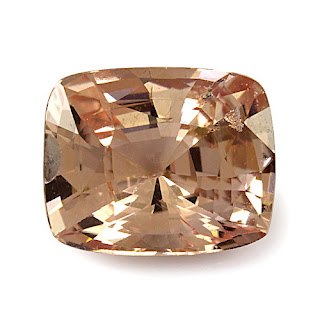We call it Padmaraga in Sri Lanka, but its more commonly known as Padparadscha sapphire. The name Padmaraga is derived from Sanskrit, meaning lotus (Padma) colour (Raga), signifying the vibrant mix of pink and orange tones reflected by the stone. There’s also another variety of sapphires known as Pushparaga in Sri Lanka. The Pushparaga sapphire is a mix of pink and yellow tones. Pushparaga sapphires also attract a premium price in Sri Lanka, but are less widely known around the world. We believe the word Padparadscha derived from the combination of words Padmaraga and Pushparaga.
 Padparadscha is the rarest of all sapphires. The finest quality Padparadscha sapphire can fetch up to $30,000 per carat, even for a one carat sapphire. It is such a delicate mix of colour and hence the price greatly depends on the buyer’s taste, affordability and the seller’s willingness to sell. Padparadscha sapphire was originally found in Sri Lanka hundreds of years ago. Although in recent years similar colour sapphires have been found elsewhere in the world, many experts in the industry maintain the view that only those found in Sri Lanka should be called Padparadscha and those found elsewhere in the world should rather be called Pinkish Orange or Orangish Pink than giving the romantic term Padparadscha.
Padparadscha is the rarest of all sapphires. The finest quality Padparadscha sapphire can fetch up to $30,000 per carat, even for a one carat sapphire. It is such a delicate mix of colour and hence the price greatly depends on the buyer’s taste, affordability and the seller’s willingness to sell. Padparadscha sapphire was originally found in Sri Lanka hundreds of years ago. Although in recent years similar colour sapphires have been found elsewhere in the world, many experts in the industry maintain the view that only those found in Sri Lanka should be called Padparadscha and those found elsewhere in the world should rather be called Pinkish Orange or Orangish Pink than giving the romantic term Padparadscha.
In the Sri Lankan gem market Padparadscha sapphire tones varies from the colour of a lotus, which is more pink than orange and the colour of the sunset, which is more orange than pink. How do you define the colour of the sunset or the colour of a lotus? There is no definition in terms of how much of each tone makes the mix of this enchanting Padparadscha sapphire. We think its this mysteriousness what makes Padparadscha even more romantic and intriguing, and it is left up to the bearer to decide what tone attracts him or her the most.
 These mysterious Padparadscha sapphires are extremely rare in nature. We have seen many sellers who claim to sell untreated sapphires yet still sell treated Padparadscha sapphires. These treated sapphires could be heat treated, diffusion treated, dyed, oiled or irradiated to obtain the colour. The price of treated Padparadscha and untreated Padparadscha varies significantly.
These mysterious Padparadscha sapphires are extremely rare in nature. We have seen many sellers who claim to sell untreated sapphires yet still sell treated Padparadscha sapphires. These treated sapphires could be heat treated, diffusion treated, dyed, oiled or irradiated to obtain the colour. The price of treated Padparadscha and untreated Padparadscha varies significantly.
In terms of the clarity of a Padparadscha sapphire, it is highly desirable to be eye clean as even the slightest inclusion can be highly visible unlike in other sapphires, but of course the price will reflect this. It is also wise to bear in mind that it is those inclusions that can tell us whether a sapphire has been heat treated or not as many of those inclusions melt away or change their form once a sapphire has been heat treated.
During our recent visit to Sri Lanka, we came across this stunning Padparadscha (or Padmaraga as we like to call it). It is of great clarity other than a fingerprint inclusion closer to the girdle (edge) of the sapphire visible at close inspection. It has a beautiful mix of pastel pink and orange tones. Its pastel colour and great cut have give this Padparadscha a fabulous lustre.
Due to its rarity, many gem suppliers have never even seen a Padparadscha sapphire in real life. We feel lucky to have one of the rarest of all, an untreated, unheated Padparadscha from Sri Lanka at Deliqa collection.


No comments :
Post a Comment
What do you think?